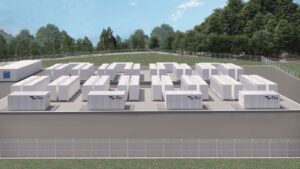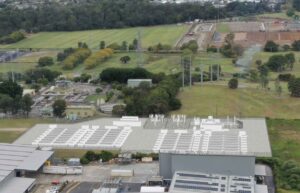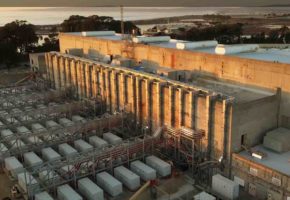The world’s first big battery, the Hornsdale Power Reserve completed by Neoen in South Australia in 2017, looks to have a lucrative new grid services contract, according to the French renewables giants latest results report – although few details have been given.
Neoen reported another massive quarter of growth for the quarter ending in March 2023, with earnings from its portfolio of wind, solar and energy storage projects lifting year-on-year revenue by a tidy 42 per cent.
Neoen, whose Australian assets include two of the world’s most powerful large-scale batteries – Hornsdale and the Victorian Big Battery – currently has a portfolio excluding early-stage projects of 20.6GW, having grown it by 1.3 GW between the end of December and the end of March.
In an earnings report published last week, Neoen said a key driver of the boost to revenue was the contribution from assets – namely wind energy assets – that started producing in 2022 in its core markets, including Australia.
Neoen says wind revenue was up by 64% compared to the first quarter of 2022, thanks largely to relatively new projects connecting to grids in France, Finland and Australia.
In Australia, the key contributor was the 157MW wind energy component of the massive Kaban Green Power Hub, which started to inject electricity in the grid in Queensland in October of 2022.
Solar revenue growth was less dramatic, but still up 28% on first-quarter 2022 levels, again driven by generation from assets that came online in 2022 – including in Australia the 400MW Western Downs solar farm in New South Wales, which started generating last year but has only just been fully completed and is yet to reach its full output.
On storage, the big battery trailblazer reported an 18% revenue rise on its first-quarter 2022 level, an increase Neoen says was to a large extent powered by Hornsdale Power Reserve’s Frequency Control and Ancillary Services revenue (FCAS) and the entry into force of a new Fast Frequency Response service agreement.
That “new Fast Frequency Response service agreement” is what caught RenewEconomy’s eye in the Neoen report, but the company could not offer any further details on how the contract works.
“The outlook for Neoen is more exciting than ever,” said Neoen chair and CEO Xavier Barbaro in comments on the result.
“The growth in our revenue, which outstripped even the increase in our power generation, shows the very large top-line contribution made by our recent capacity additions.
“Neoen is thus delivering both strong growth and value creation.”
On the performance of the company’s assets, Neoen reports that the average load factor of its wind farms was 31.2% in the first quarter of 2023, compared to 33.8% in the year-earlier quarter – down partly due to unfavorable wind conditions in Australia and in Ireland.
The average load factor of Neoen’s solar farms was also down, only slightly, at 22.3% in the first quarter of 2023, compared to 23.9% in the corresponding quarter of 2022.
The company says lower availability rate was a factor in this decline, “as was a decision to voluntarily turn down a solar power plant in Australia during periods of negative prices.”
RenewEconomy asked Neoen which solar plant the report referred to in this instance, but again was not able to get any further information.










